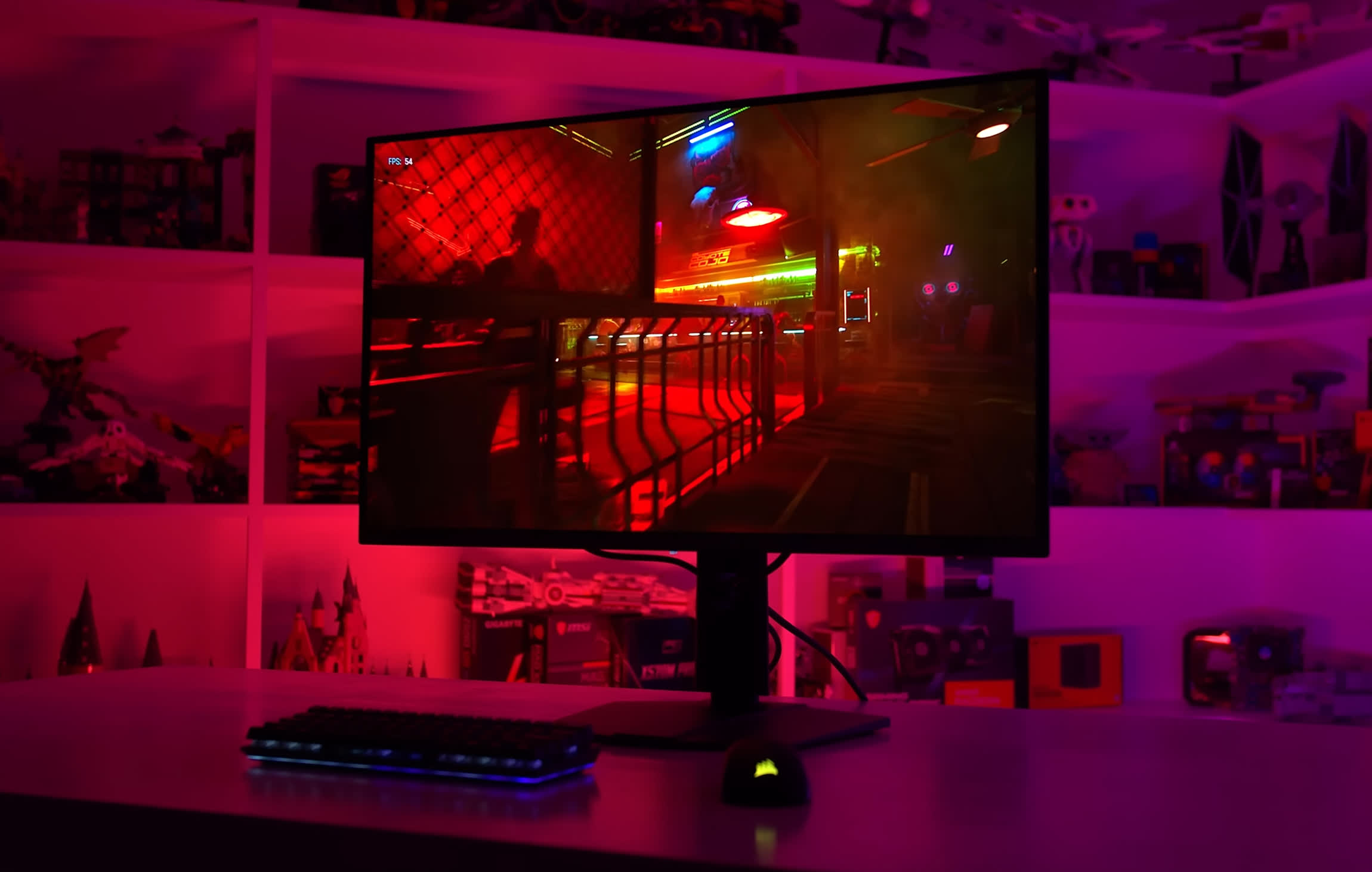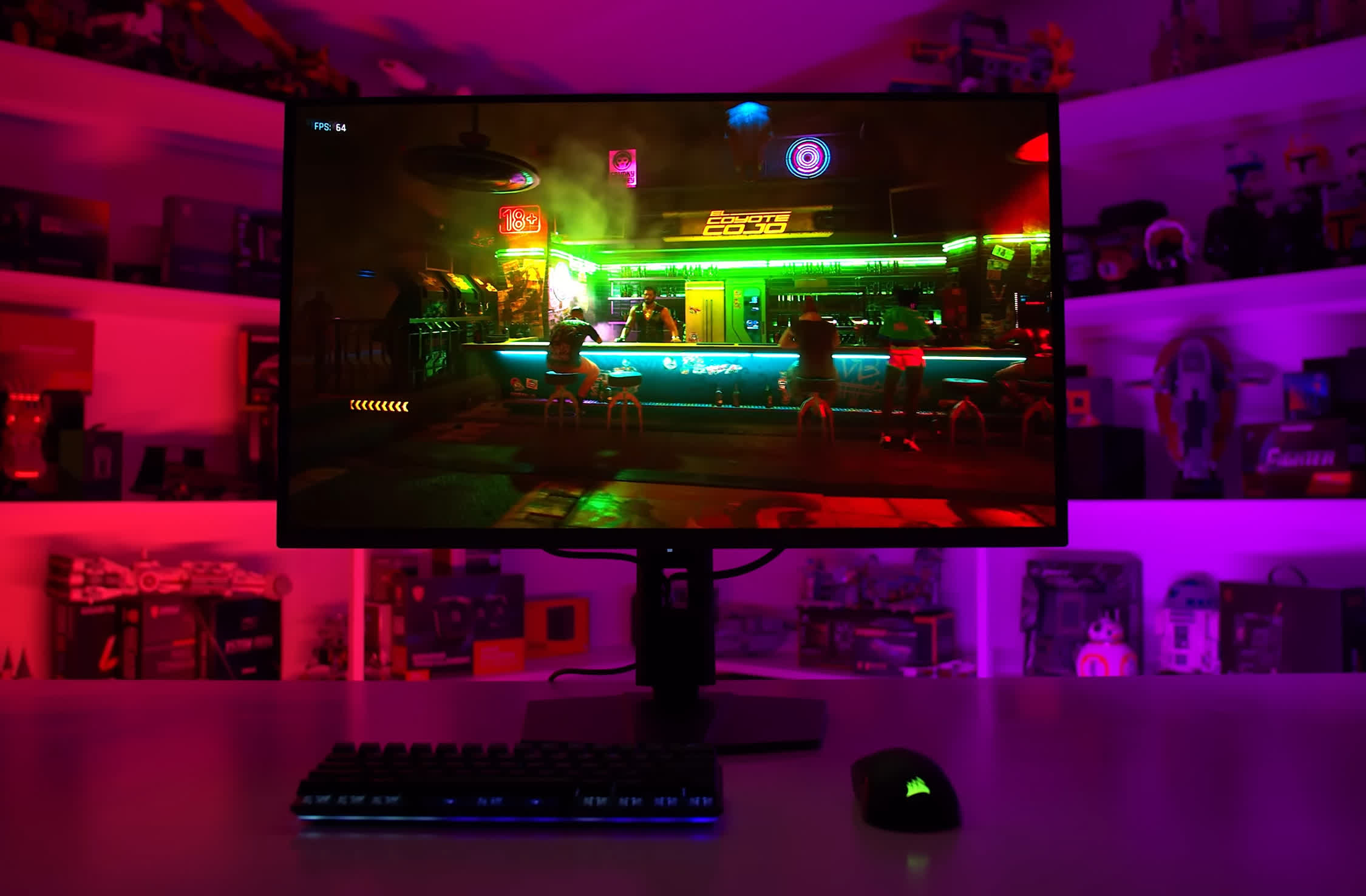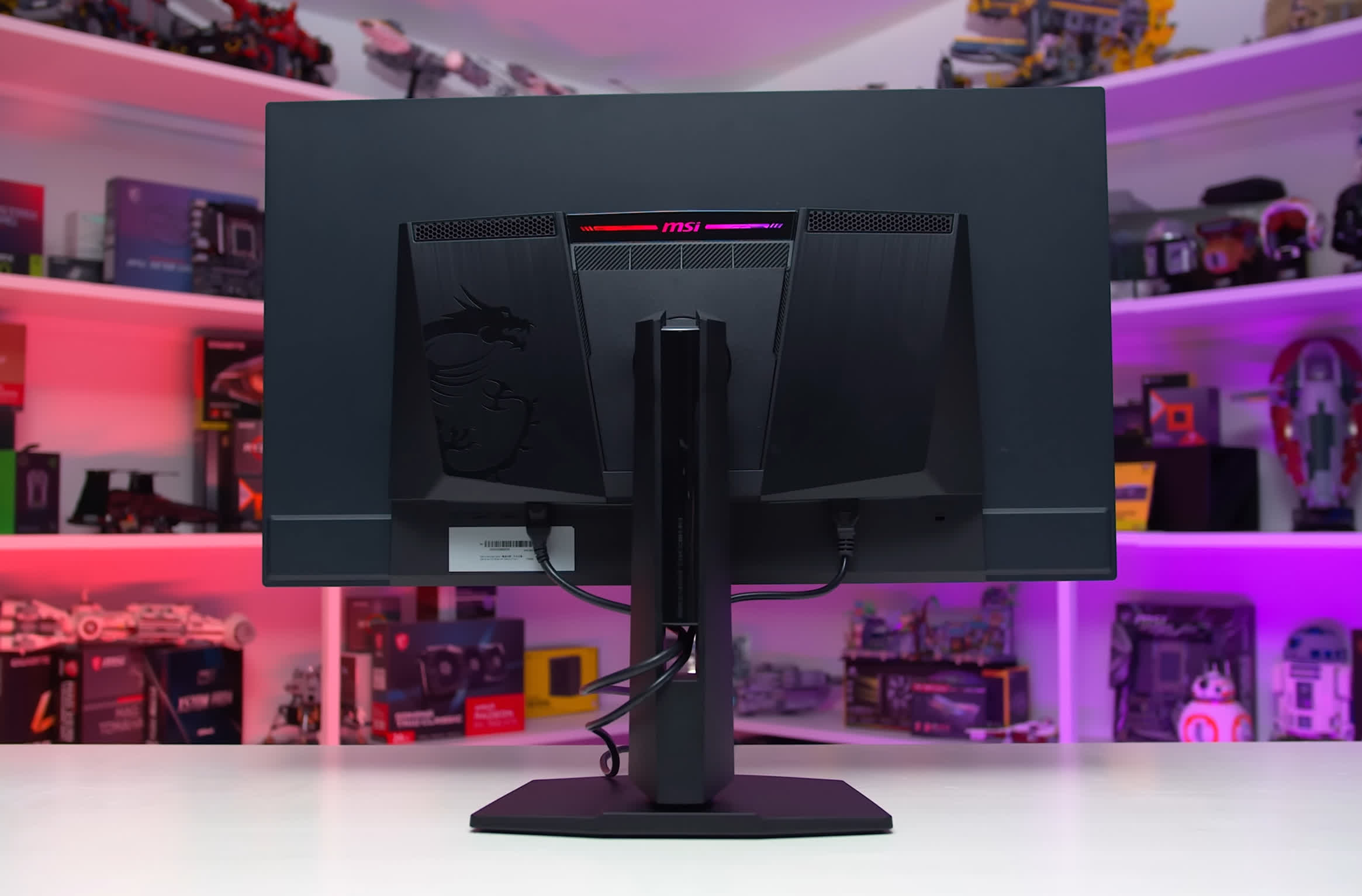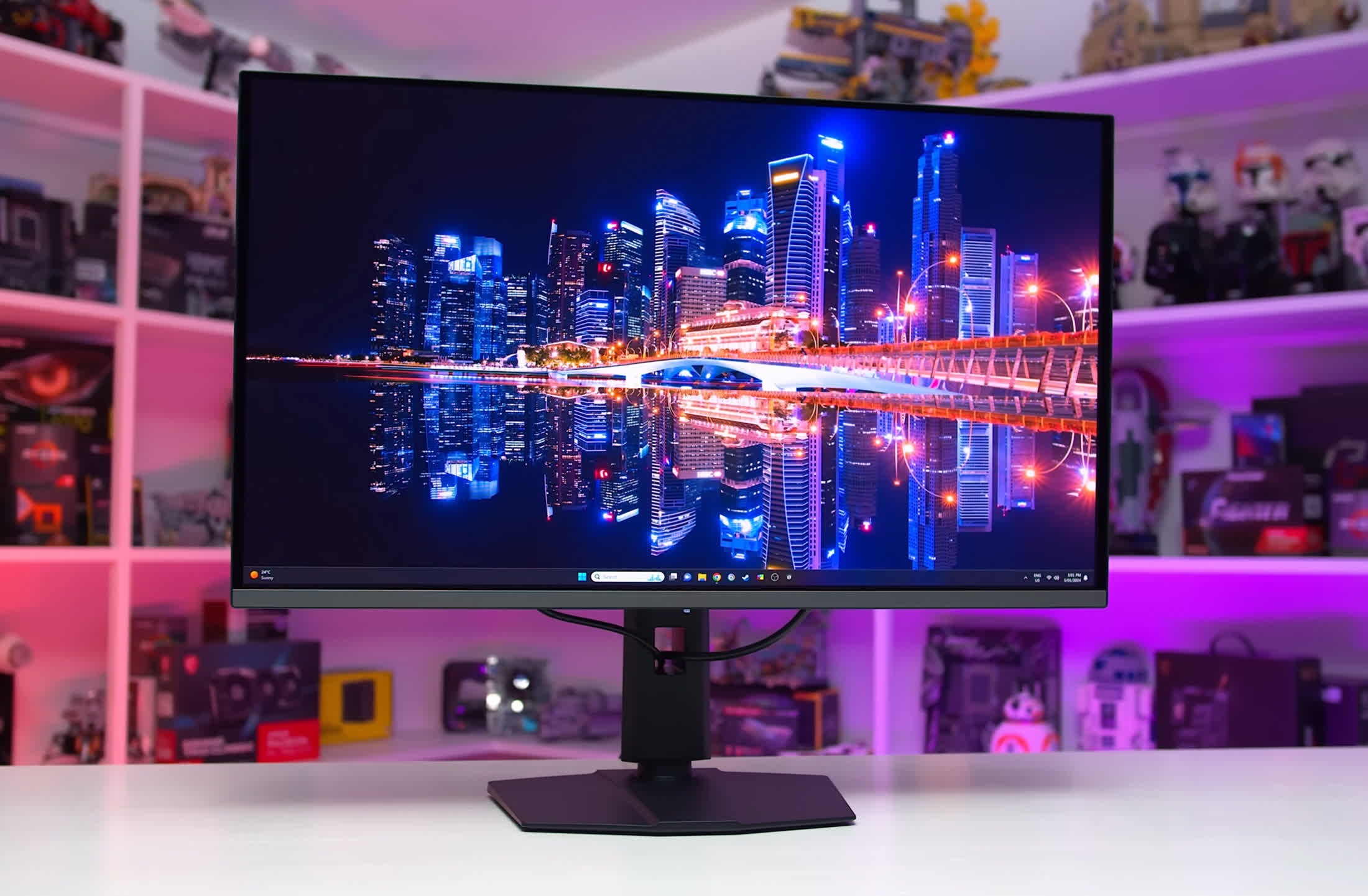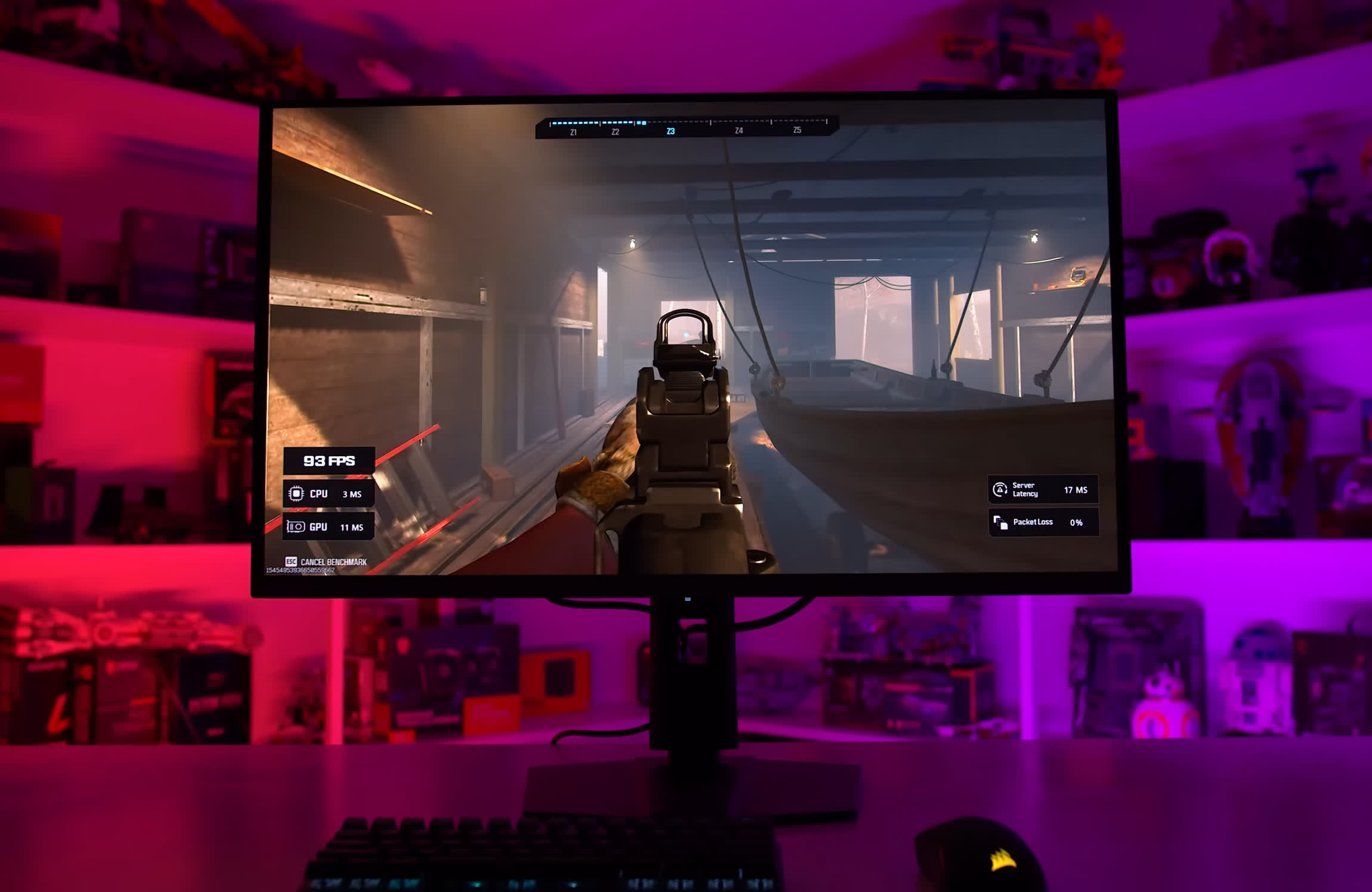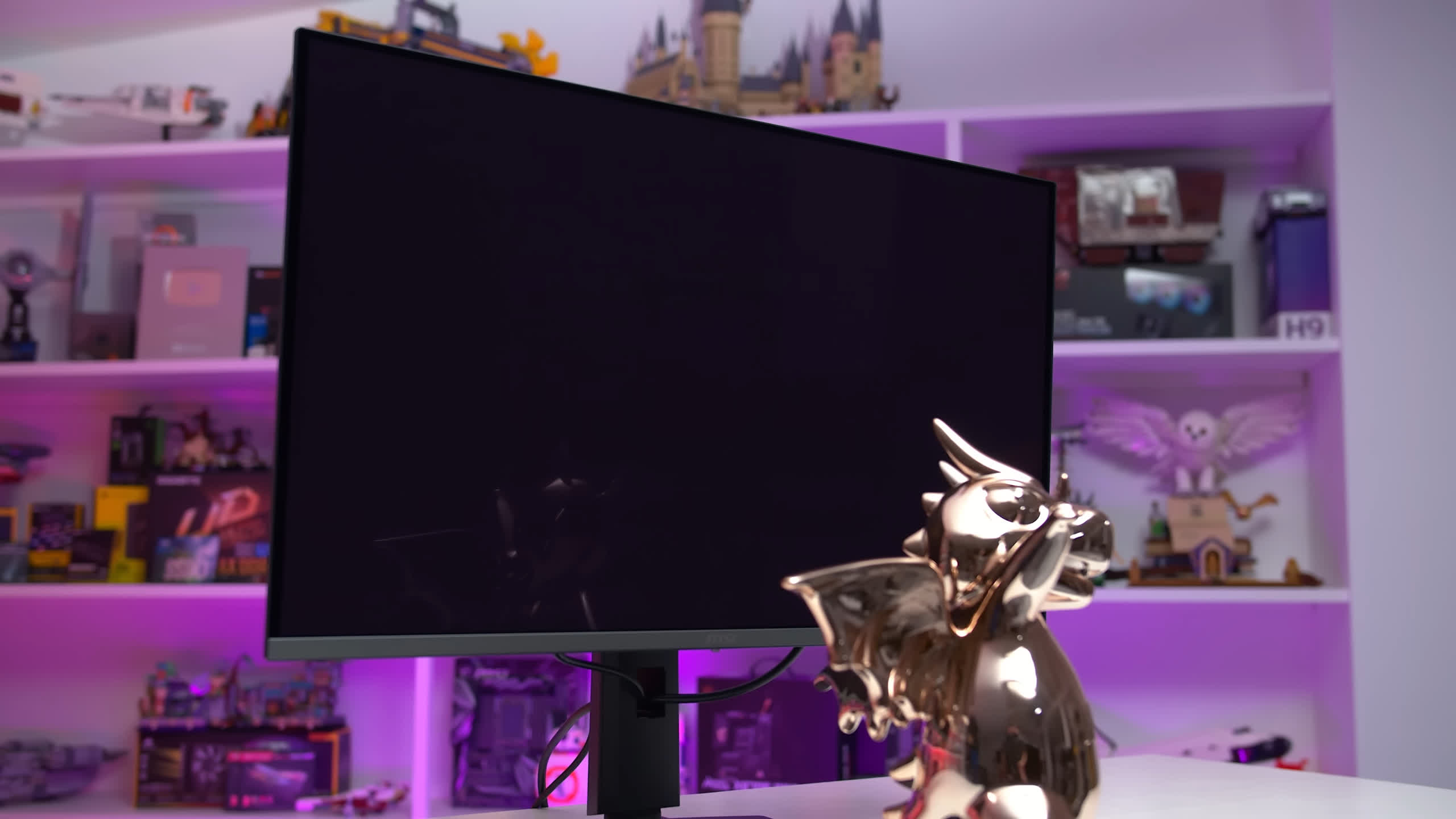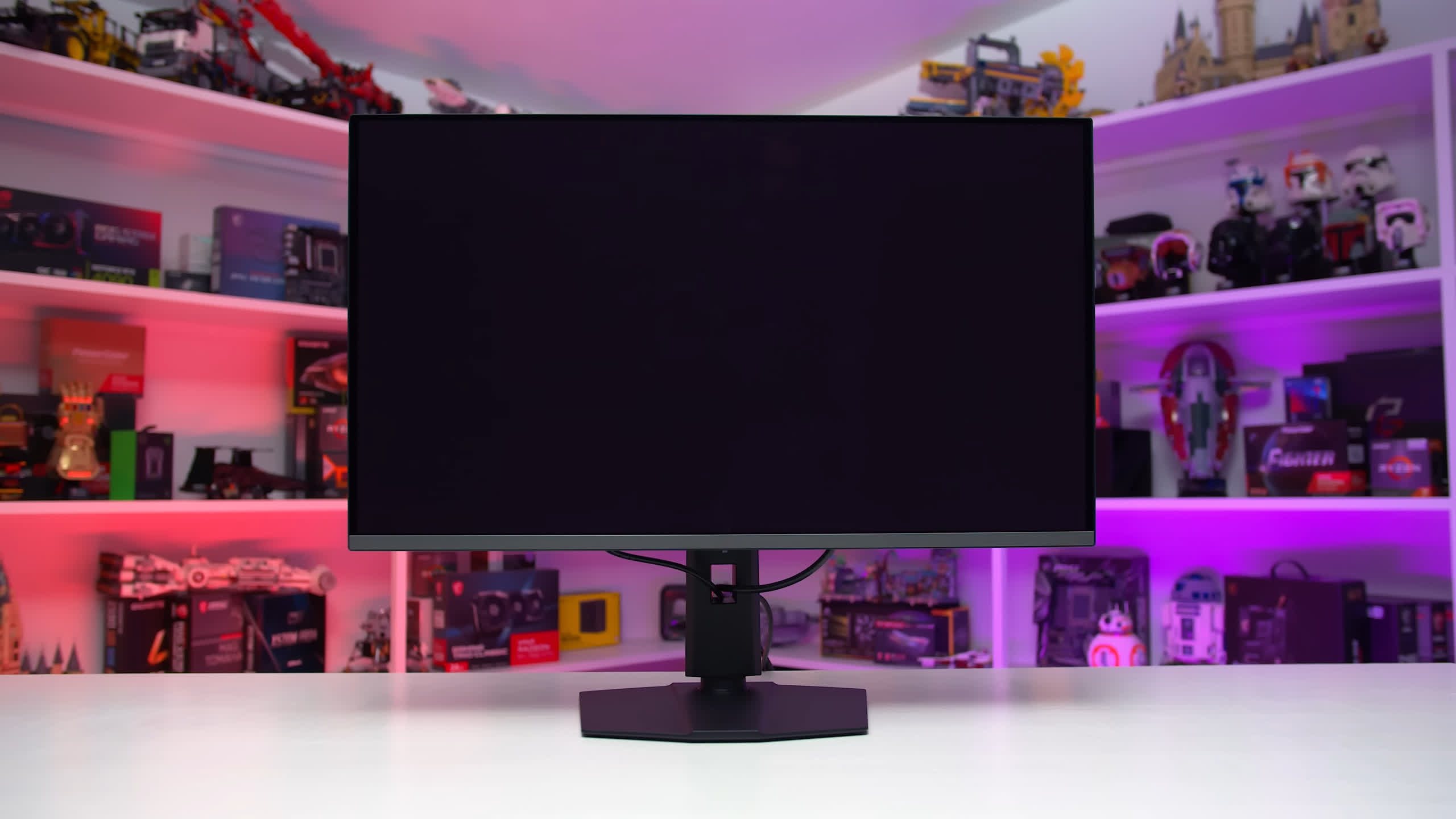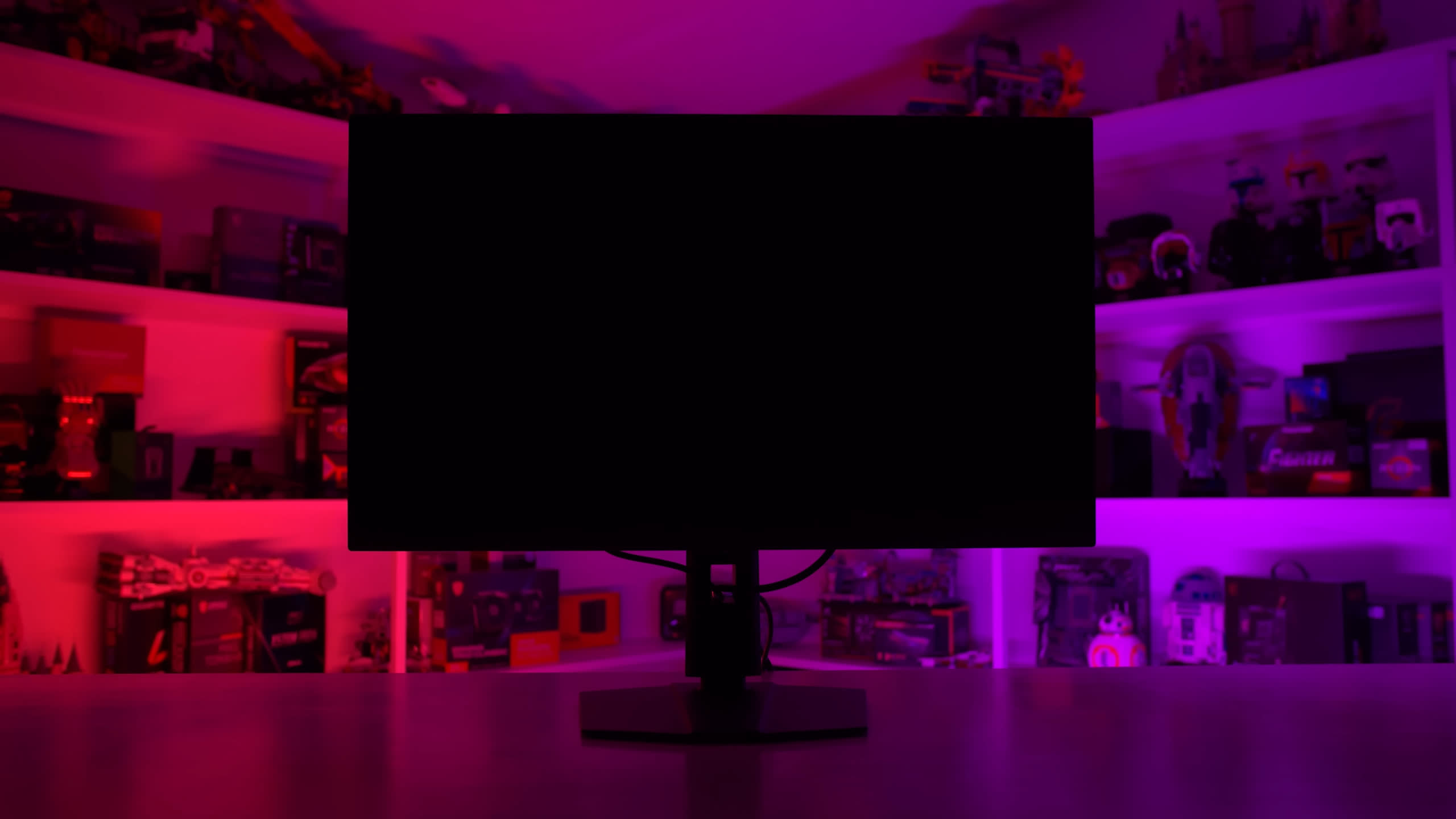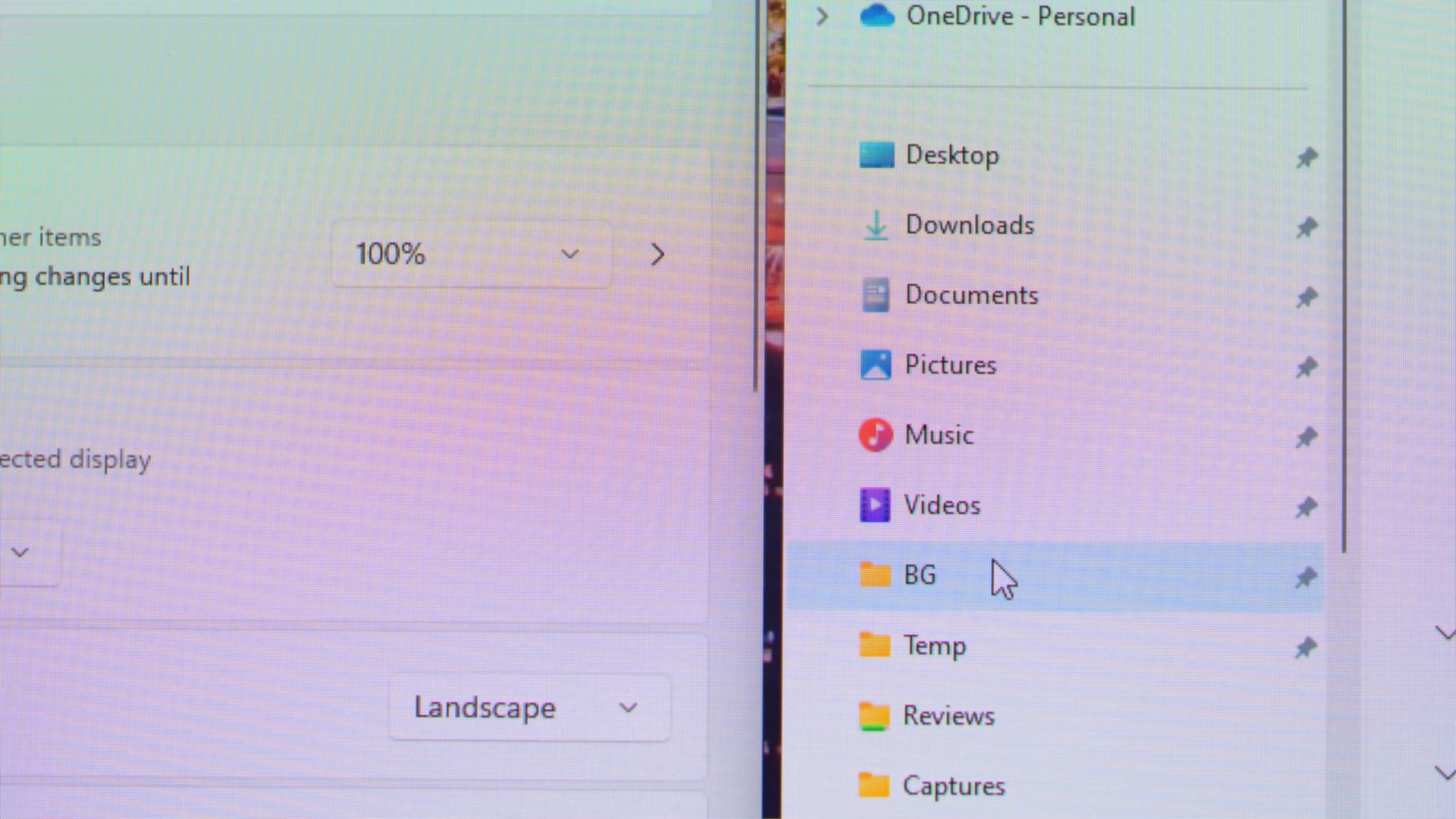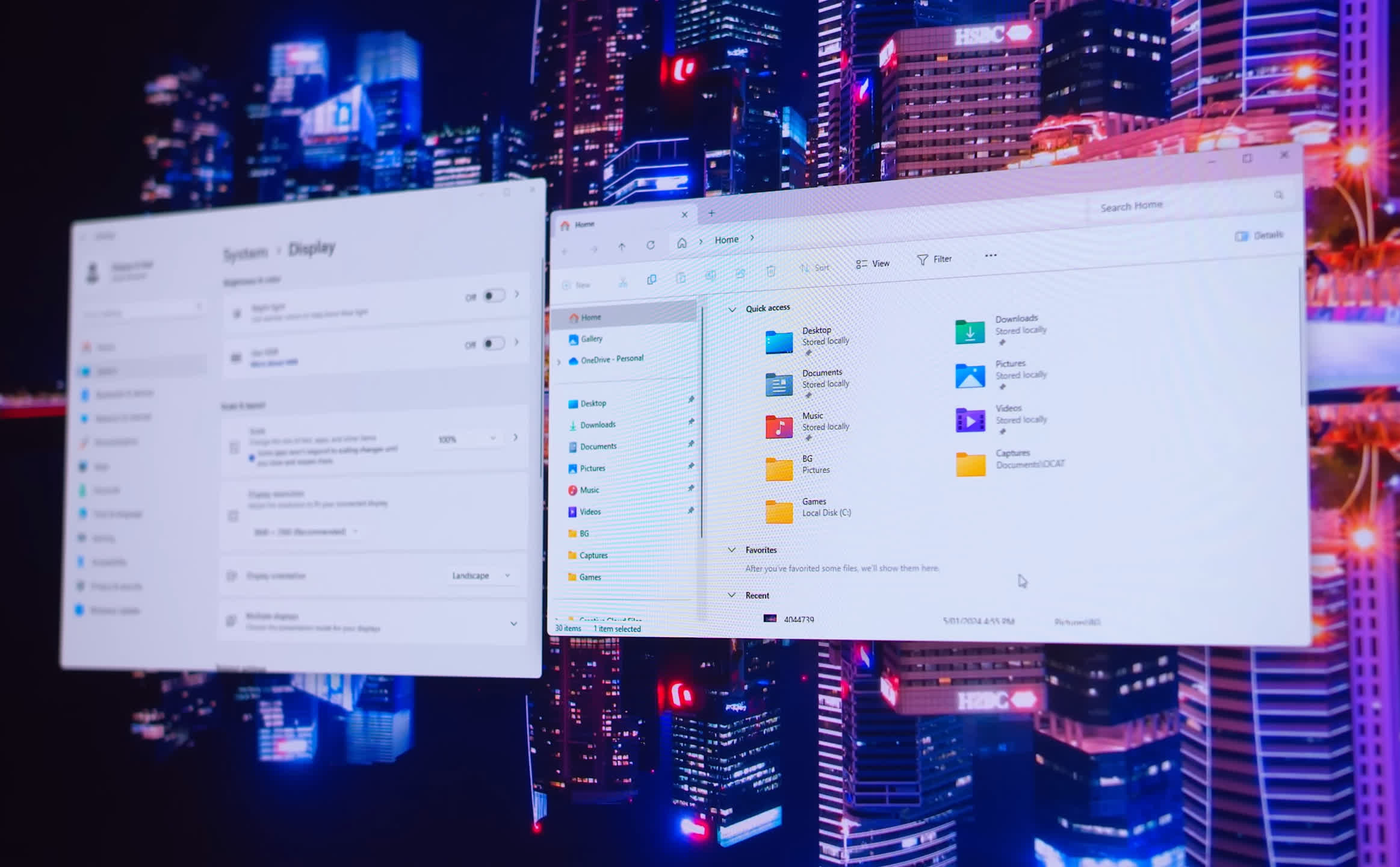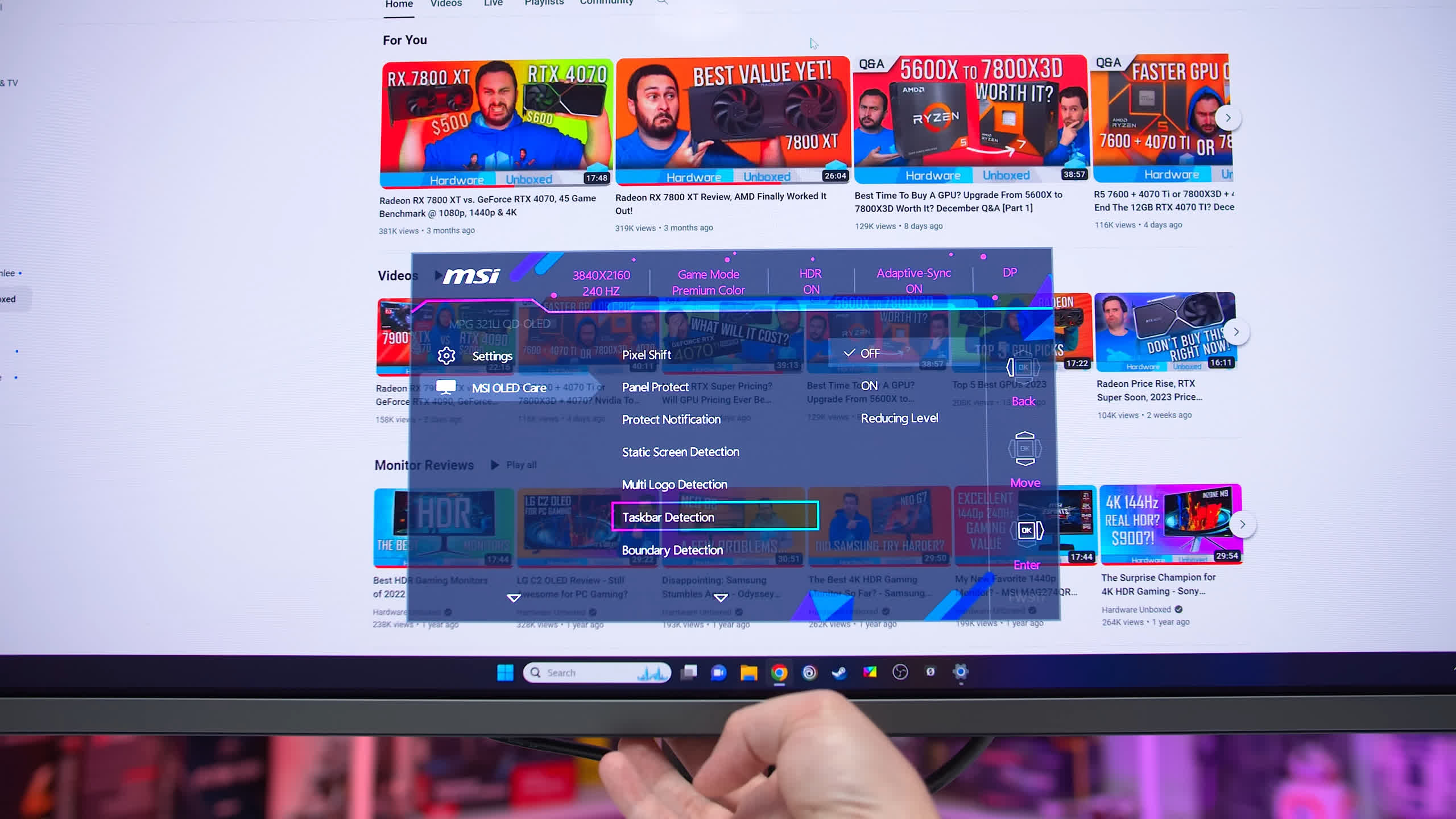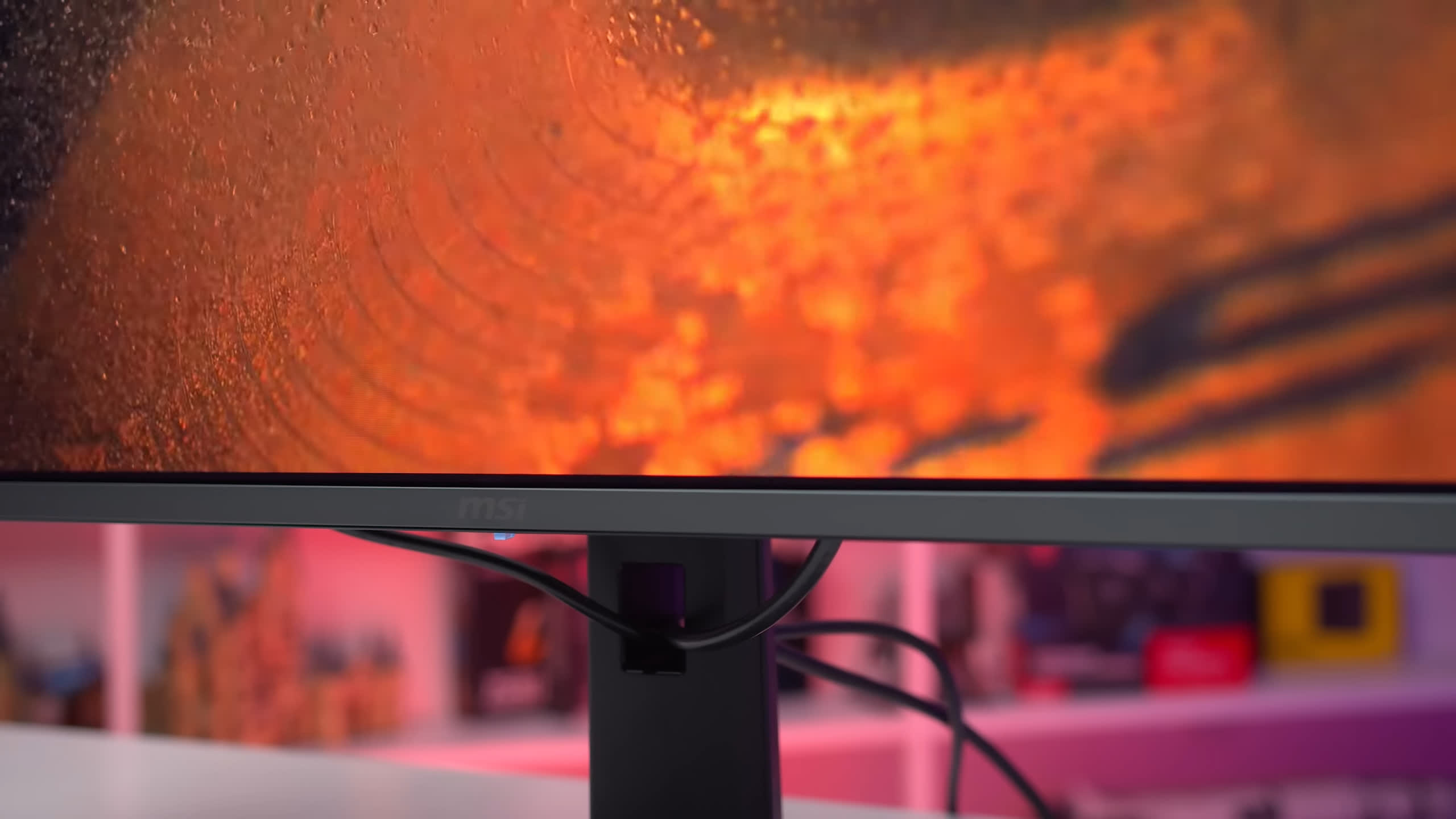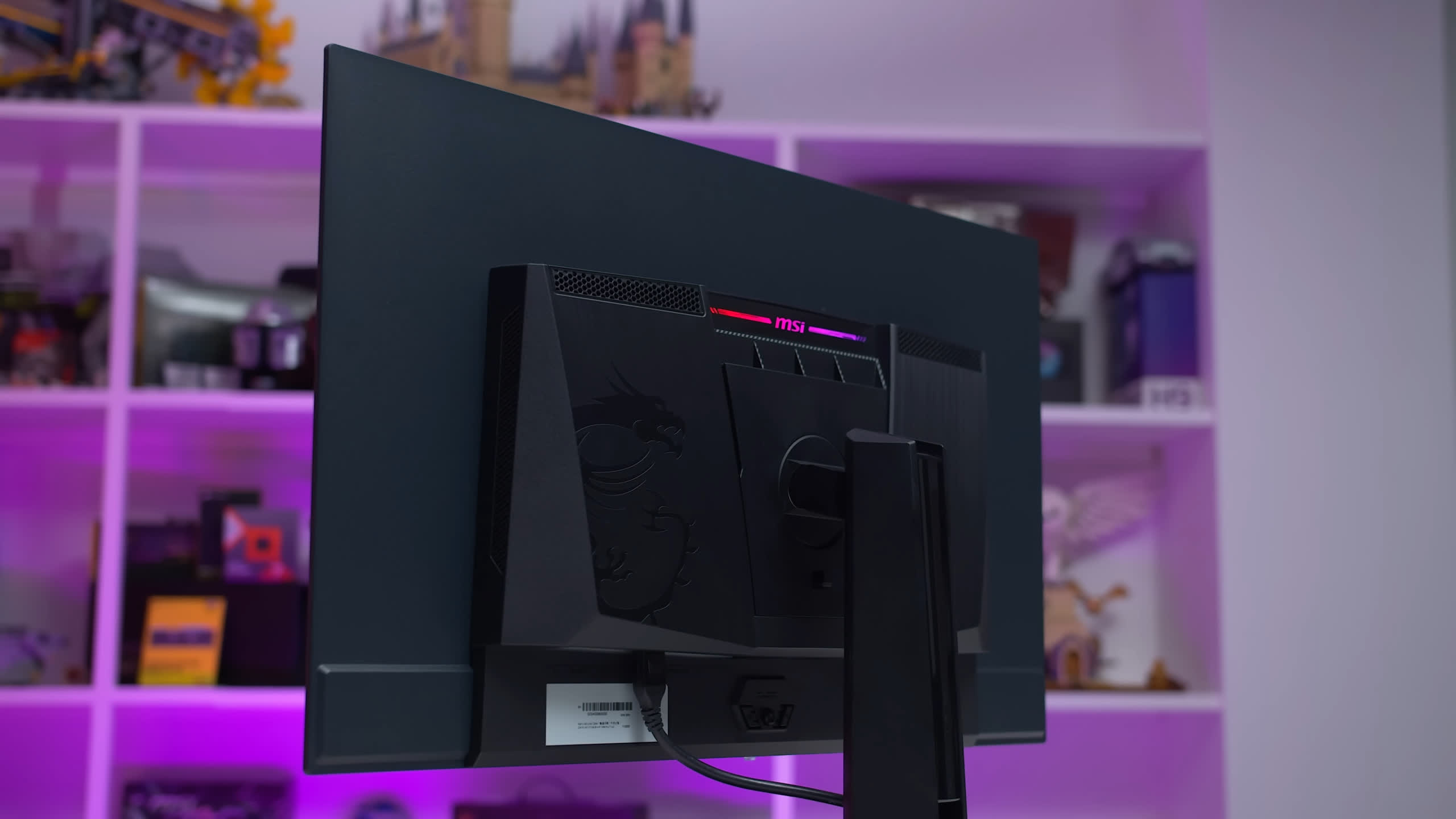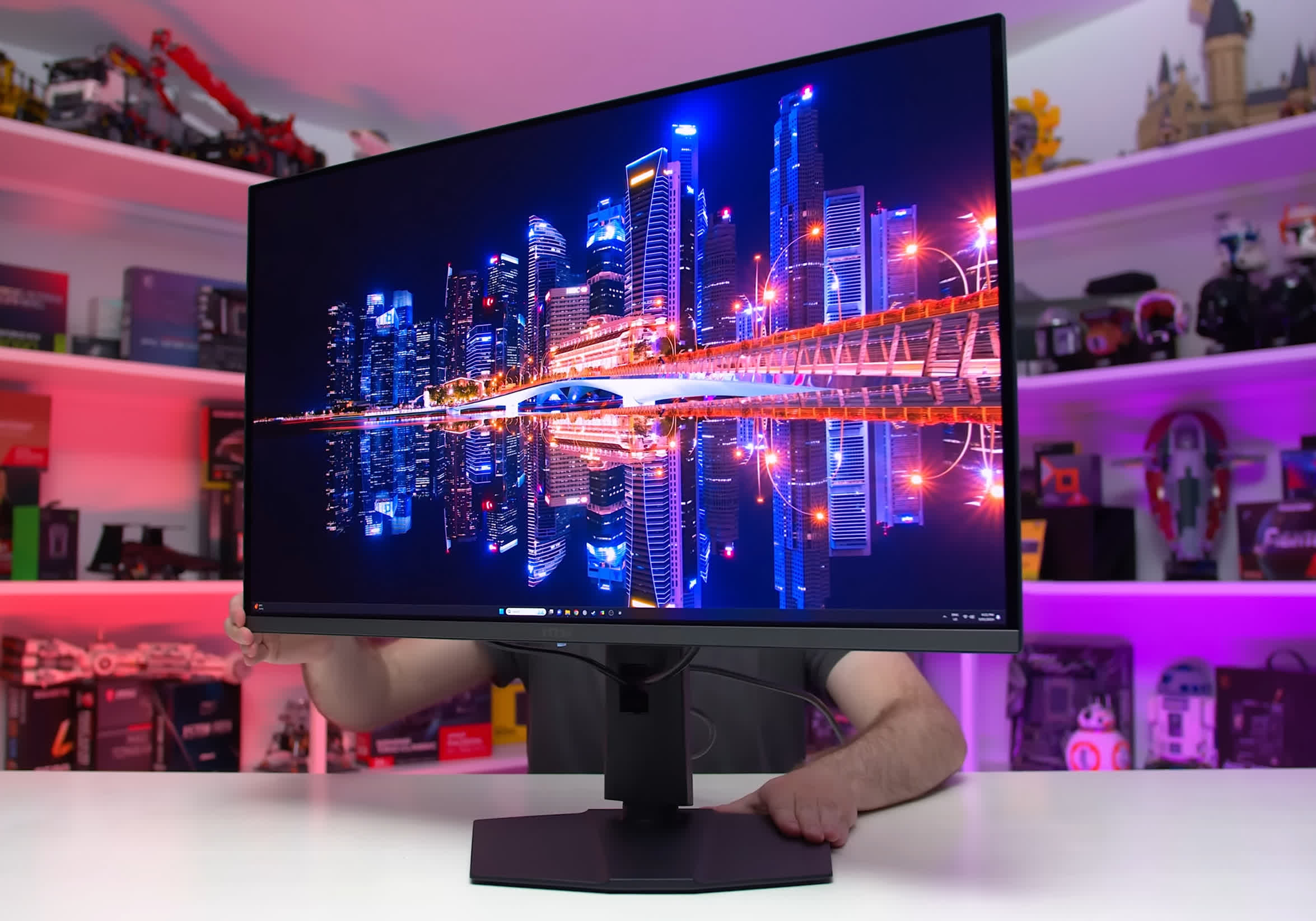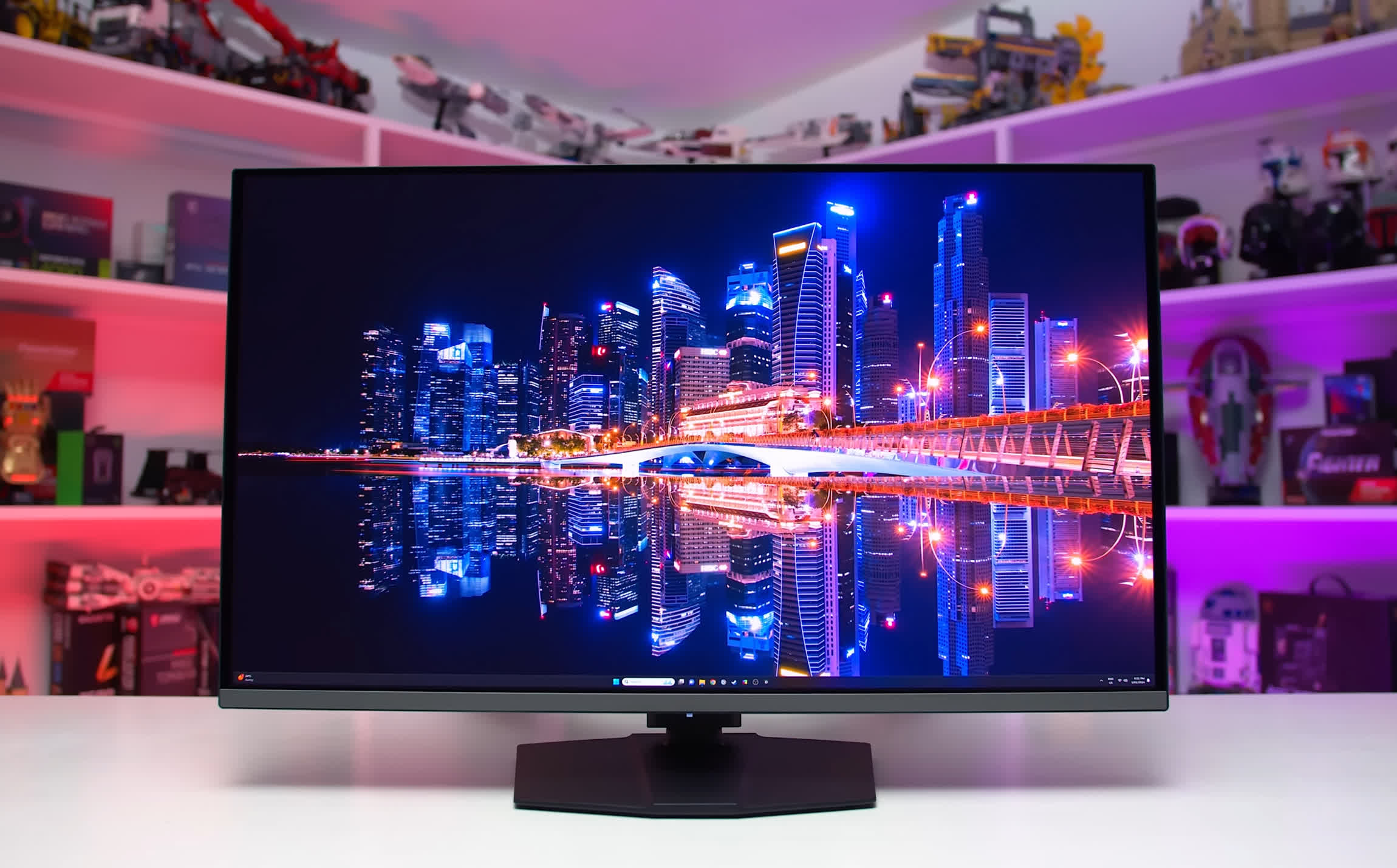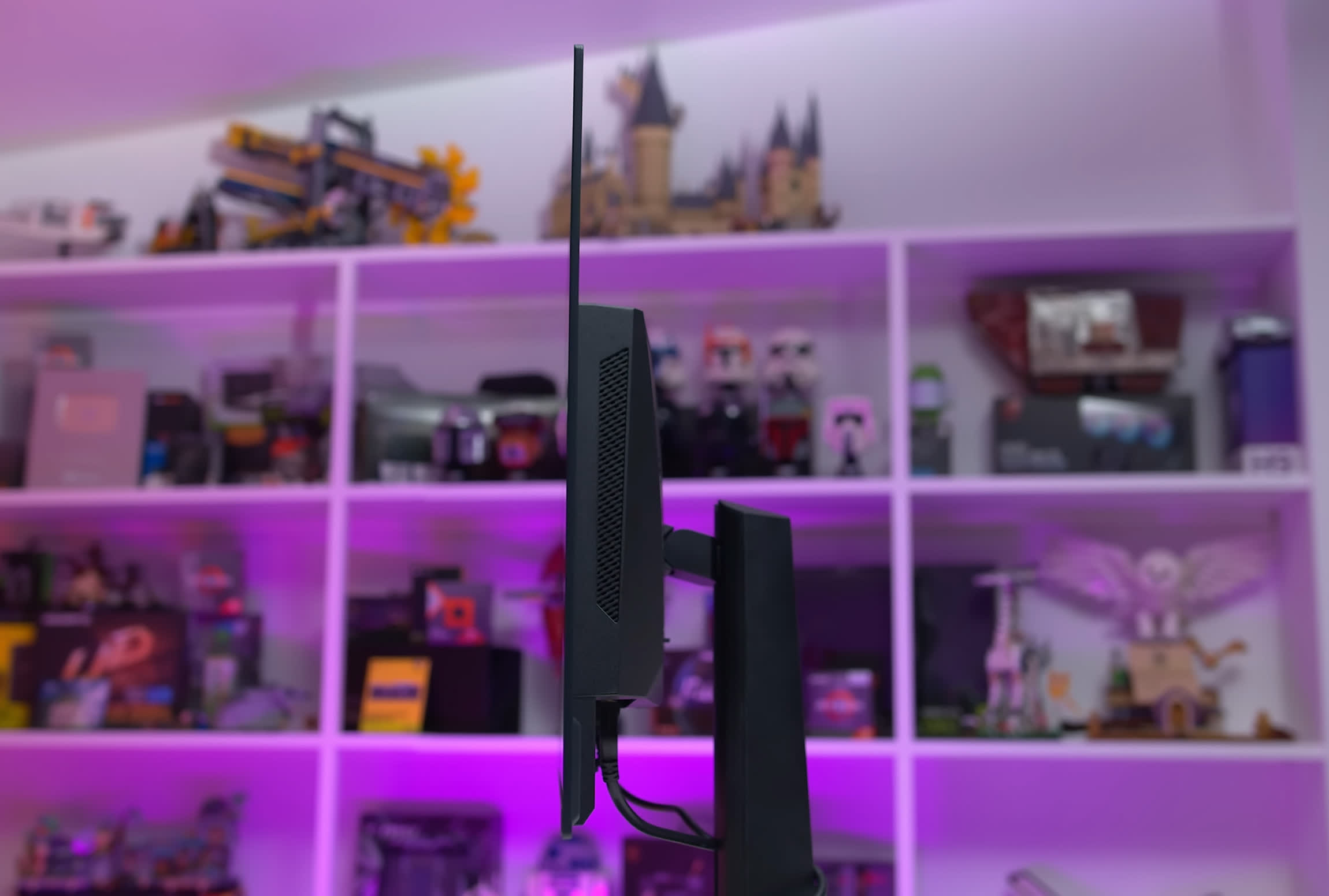For the past few weeks we've been testing the upcoming MSI MPG 321URX, a new gaming monitor packing one of the long-awaited 32-inch 4K 240Hz QD-OLED panels, and today we're going to offer a preview and share as much as we can about this product. This is a pre-production unit, so we're not allowed to share performance data just yet, but we do have quite a bit of information to go over and answers to questions we expect you might have.
To start with, the MSI 321URX will be available in the US, Europe, Australia, and New Zealand starting in February, with a wider launch in March, priced at $1,200. That's around the mark of other premium OLED displays and should slot in nicely considering that 1440p 240Hz WOLEDs are now down around the $800 mark. It does remain a premium-priced monitor, but this price is far from excessive considering what some monitor manufacturers have charged for true HDR displays over the last few years.
This price point should be indicative of the competition that's set to land on the gaming monitor market in 2024. This MSI monitor is not the only one to use this 4K QD-OLED panel – other versions from Asus, Dell, Samsung, and more are also launching soon. We are also expecting intense competition as a second 32-inch 4K 240Hz OLED panel from LG Display is also coming. This LG WOLED panel will offer dual-mode functionality, doubling as a 1080p 480Hz display. With so many options and, crucially, multiple panel manufacturers targeting this spec, a fiercely contested battle should keep prices in check.
Basics and Specs
The MSI 321URX uses a 2nd-generation QD-OLED panel, featuring a smaller pixel structure to allow for a higher density 4K resolution compared to recent 49-inch super-ultrawide QD-OLEDs. The display is slightly overprovisioned with additional pixels for pixel shifting functionality while maintaining a full 3840 x 2160 resolution, a common feature in gaming OLEDs.
MSI is quoting a 0.03ms grey-to-grey response time. However, we're not expecting any response time performance differences compared to other OLEDs, which typically sit in the 0.2 to 0.3ms range based on our testing.
They are also quoting 250 nits of typical brightness for full-screen sustained SDR usage, as well as 1,000 nits of peak brightness for HDR. We can't show you actual numbers just yet, but these figures align with what we've seen from other QD-OLEDs, so brightness characteristics should be similar. It comes DisplayHDR True Black 400 certified, which is the same spec other QD-OLEDs have received, not to be confused with DisplayHDR 400 for LCDs.
For ports, we have DisplayPort 1.4 with DSC, two HDMI 2.1 ports, and USB-C with DP-Alt mode and 90W of power delivery. All these ports support the full 4K resolution at up to 240Hz. Features like DSC mean DisplayPort 1.4 remains sufficient for this type of display, as we already knew from the Samsung Odyssey Neo G8. This includes 10-bit HDR and adaptive sync as well, with no need for unusual subsampling techniques. There's also a built-in KVM switch.
One of the main questions we had going in was whether these 32-inch 4K OLEDs would require active cooling like some other QD-OLED monitors or whether they could operate passively. We can confirm the MSI variant is silent and utilizes passive cooling through a custom heatsink. This heatsink is contained within the central box on the rear, from which the QD-OLED panel extends outwards, similar to the Asus PG27AQDM, which is also a passively cooled monitor using WOLED technology.
We sat right next to it while in operation and it's dead silent, which is always a relief as active cooling has been a nuisance on some other gaming monitors like the AW3423DW.
Screen Coating and Panel Composition
For panel composition and coating, this is a classic Samsung 2nd-gen QD-OLED panel, meaning it's glossy with an "anti-reflective" surface treatment. Comparing it side by side with another 2nd-gen QD-OLED, the Asus PG49WCD, shows that the reflectivity of the glass for both ambient light and objects in front of the display is similar.
Some ambient light is reflected in brighter lighting conditions due to the panel composition, a common issue for QD-OLEDs across all models, and that's no different here. However, as TFT Central has proven, this 2nd-gen QD-OLED design is more effective than 1st-gen QD-OLEDs, like the 34-inch 3440x1440 175Hz panels, in terms of minimizing ambient light reflectivity.
Mirror-like reflections are also seen at times, though generally, QD-OLEDs are decent at minimizing this issue compared to other glossy panels.
So if you're wondering whether you'll need to optimize lighting conditions to use a 32-inch 4K QD-OLED monitor, we suspect that will be the case, though to a somewhat lesser extent than the original ultrawides. In our office area, which is often well lit through sunlight or overhead lights, we did notice raised blacks. However, when moving lights behind the display or using it in a dimmer environment, it's a complete non-issue.
We think what we've said previously about QD-OLED panel coating and composition will remain true with these newer 4K panels as seen in the MSI 321URX, but we'll need more time with it and to conduct more testing to confirm what we've seen in this initial hands-on preview.
Text Clarity
Pixel density and text clarity is another big question: is a 4K QD-OLED suitable for desktop work? Well, putting burn-in aside for a moment, we were genuinely quite impressed with the text clarity after using this monitor for a few days.
This isn't the same kind of extensive testing we do for our full reviews, but our initial impressions are that the pink-green fringing seen from 1440p-class QD-OLEDs, especially the initial wave of 34-inch ultrawides, is much less noticeable at a 32-inch 4K pixel density. The improvement from 110 PPI to 140 PPI is a significant 27% gain, and combined with the 2nd-gen QD-OLED subpixel structure, text clarity is much better.
I typically use 32-inch 4K monitors at 125% scaling in Windows, which looks great on the 321URX, but we also tried 100% scaling and found that to be very usable as well. On first-gen QD-OLEDs at a lower pixel density, the fringing issues are easy to spot and were one of the downsides we pointed out in those reviews. However, on this monitor, the text clarity looks pretty great. Of course, some people never had an issue with those first-generation panels either, but we think those people will notice an improvement with the 32-inch 4K panels and suspect anyone on the fence who was worried about text clarity will be very satisfied with this display.
The big test, of course, is whether or not this QD-OLED panel with its triangle RGB subpixel layout (yes, still triangle RGB here) is as good as a 32-inch 4K IPS with a traditional RGB stripe for text clarity. You'll have to wait until the full review to see a more extensive look at this, but our initial thoughts are that it's actually surprisingly close. To our experienced eyes, we'd say an IPS panel still looks slightly better, but we think many people would find it hard to spot the difference. It truly appears that this MSI monitor and QD-OLED panel are able to deliver a genuine 4K experience for text.
Burn In Protection Features
On the burn-in side of things, OLED still carries a risk, and with 2nd-gen QD-OLED and really any OLED, we're still in a bit of an unknown phase where we don't really know how long these panels will last for desktop usage. We suspect many buyers will be interested in a display like this for both gaming and desktop work. We're not sure how comfortable we'd be recommending it for that, but we did spot some interesting features that MSI is providing.
In the OLED care section, we found all the usual stuff for burn-in mitigation: pixel shifting, panel protect (a.k.a. panel refresh, pixel refresh, or pixel compensation), and static screen detection. However, there's also some new stuff: multi-logo detection, taskbar detection, and boundary detection.
These are additional measures to detect and dim static elements. Taskbar detection, for example, does exactly that; it attempts to recognize and dim the Windows taskbar, helping to prevent that area from burning in, even if the overall screen brightness is relatively high. Unfortunately, these three new features are the only ones that require adaptive sync to be disabled to function, a bit annoying for people that will enable VRR for gaming. But again, this is a pre-production sample, so it's not clear whether that will be the case with final retail units.
But, it's still good to see more techniques being implemented in newer displays to attempt to extend the lifespan of QD-OLED panels. Eventually, it should get to the point where the panels are robust enough and the panel care features smart enough that this kind of monitors will be perfect even for desktop use, and we won't need to worry about burn-in. We're not there yet, but it's something we'll keep looking into with future monitor releases.
Further Impressions
So, how was using the MSI 321URX for 4K 240Hz HDR gaming? Yes, this is a very impressive experience. It's a bright monitor with an excellent contrast ratio, and it appears to be the same QD-OLED experience we've come to love in other products, but now at a highly sought-after size and resolution.
That's basically what everyone has wanted since the dawn of OLED displays: a high-resolution gaming version at a decent size. This appears to be that, and it's been a joy to use so far – we haven't used it long enough to figure out if there are performance issues, missing features, or other annoyances, so look for our full review later on.
It's also a very high refresh rate monitor. We don't think we're allowed to show a UFO Test result, but if you've seen results from 240Hz 1440p WOLED reviews, you have a pretty good idea of what to expect. The motion clarity here is excellent, and with such a high resolution and refresh rate combination, this is the sort of product that should last for a long time, through several generations of GPU hardware. During our hands-on time so far, we didn't spot any issues with low brightness flicker, low refresh rate gaming, or adaptive sync.
Finally, some quick words on MSI's design... we think it looks alright, especially from the front where the main display section is thin and has relatively slim bezels. The rear box section is a bit busy for our liking near the vent section at the top, but it does have a bit of RGB LED lighting. The stand itself is made of a pretty basic black plastic for the outer surfaces. It has all the usual ergonomic adjustability, with the exception of being able to use it in a portrait orientation; you can pivot the display slightly but not all the way to portrait.
Those are our initial impressions of the MSI MPG 321URX. If you want to see a full review with actual performance numbers, we should be receiving a final retail model in February to test it out around the time of release. This very much appears to be the flagship gaming monitor that many people were waiting for.
Of course, it will also be interesting to see what other vendors do with this QD-OLED panel, as well as how the dual-mode WOLED panel stacks up with its interesting 1080p 480Hz mode. It appears as though these QD-OLEDs will hit the market first, with the WOLED panel to follow, but certainly, there's plenty of testing to do in 2024.
